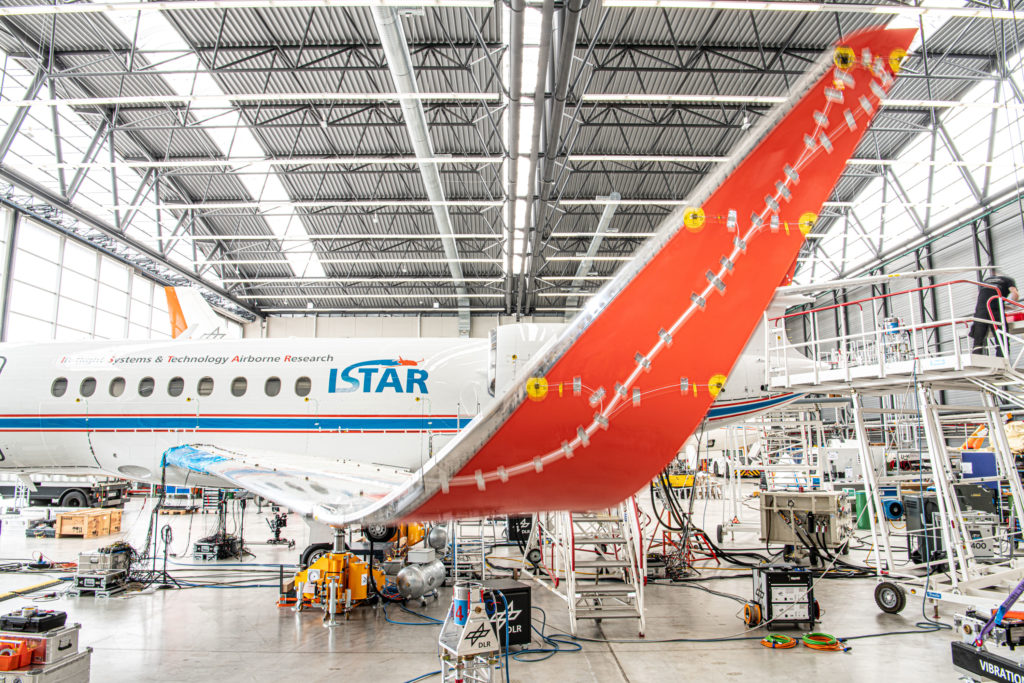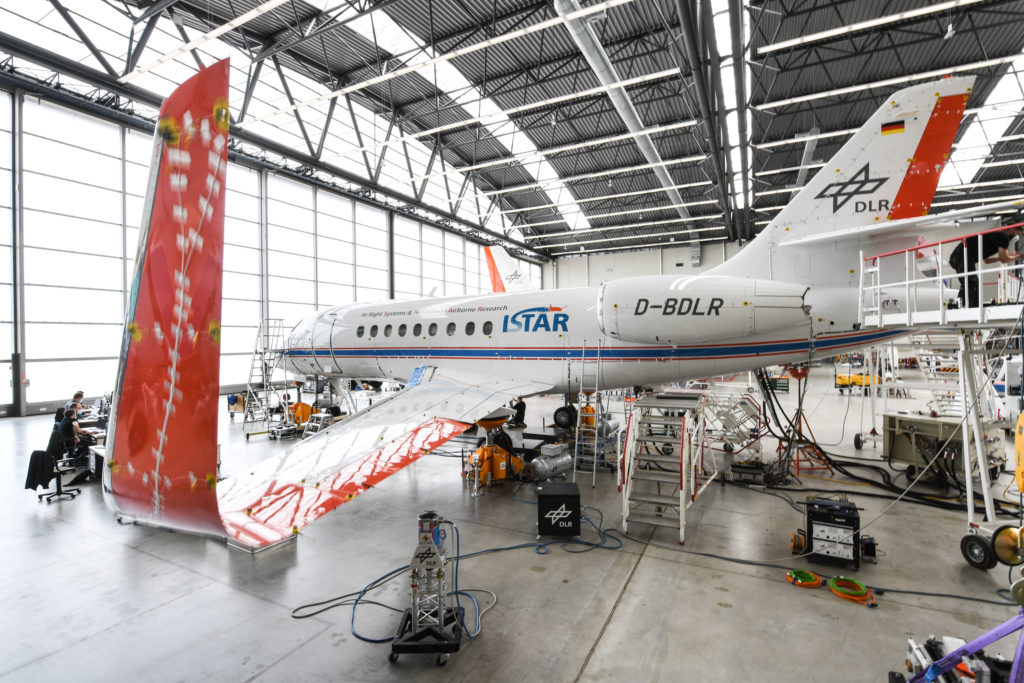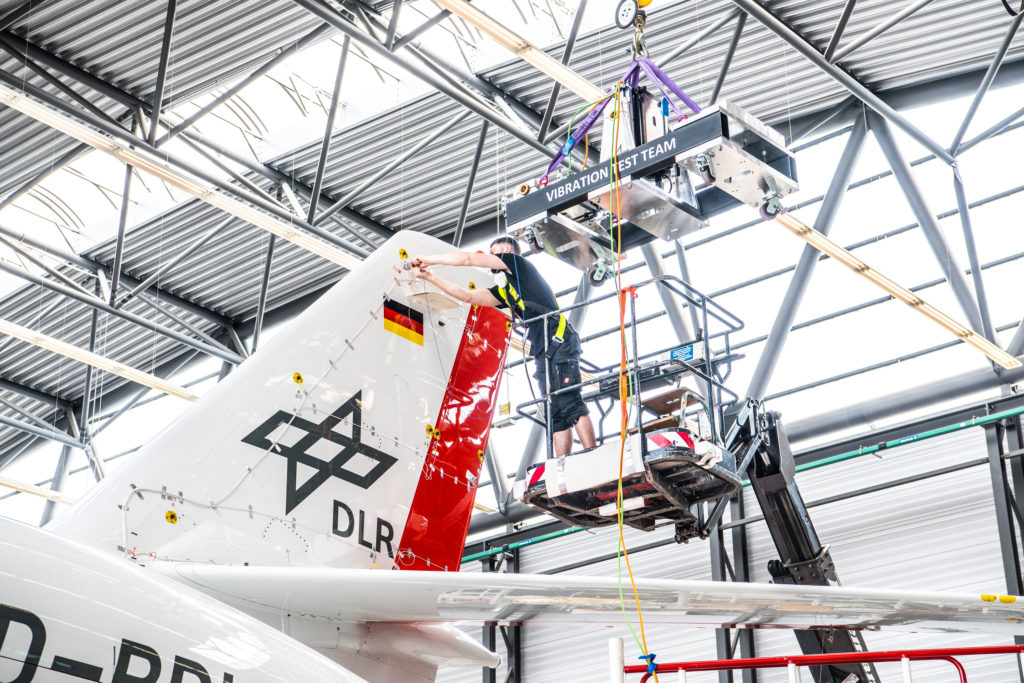ISTAR – In-flight Systems and Technology Airborne Research
Aircraft are particularly prone to vibrations due to their lightweight construction. These occur, for example, during flight manoeuvres, in gusts or when the landing gear touches down. In order to better understand the structural behaviour, researchers at the DLR Institute of Aeroelasticity are investigating the vibrations on the ground, during flight tests and in simulations.
The In-flight Systems and Technology Airborne Research (ISTAR) aircraft has been part of the DLR research fleet since 2019. Once it has been fully upgraded, it will be able to test the characteristics of new aircraft designs, real or virtual, crewed or uncrewed, under real operating conditions.
The ISTAR demonstrator shows the sensor technology and instrumentation as it is on the ISTAR research aircraft. The model also shows exactly what effects vibrations have on the structure and how these can be analysed. Approximately 30 acceleration sensors permanently record the vibrations, which are evaluated online using AI-supported software developed at the DLR Institute of Aeroelasticity. The results include all natural frequencies, damping measures and natural vibration modes of the structure. The weight distribution can also be varied by means of a water tank in the aircraft model. The resulting change in vibration behaviour is immediately displayed.
The ISTAR demonstrator represents the state of the art in real-time monitoring for aerospace structures. The technology is also used for investigations on wind turbines.
Link:
German Aerospace Center (DLR)
Institute of Aeroelasticity
E-Mail contact-dlr@DLR.de


